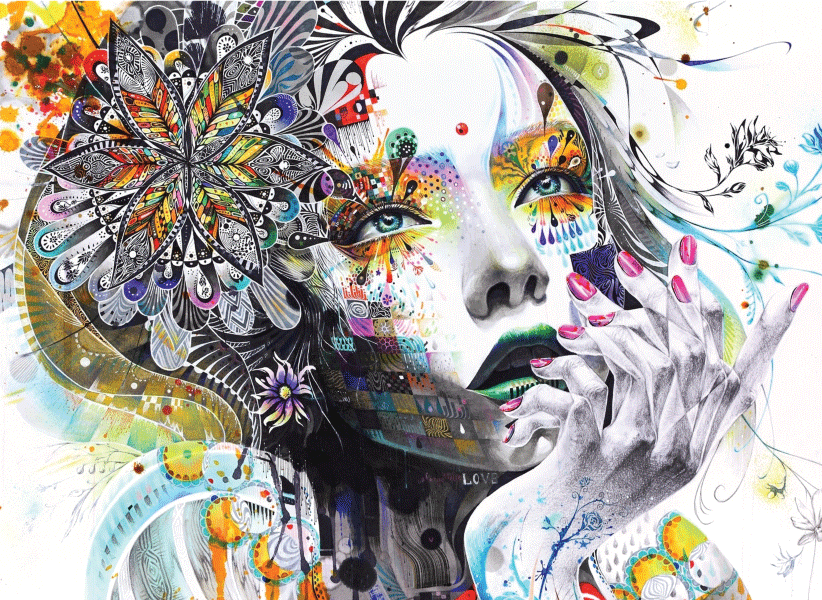Introduction
Welcome to the fascinating world of painting! Whether you’re a complete novice or have dabbled in art before, painting is a versatile and expressive form of artistic expression that allows you to create beautiful images and convey emotions through colours and brushstrokes. In this beginner’s guide, we’ll take you through the essential steps, techniques, and tips to help you start your painting journey. So, let’s grab our brushes and dive into the colourful realm of painting!
Gathering Your Painting Supplies
Before you begin your painting journey, gathering the necessary supplies is essential. Here’s a list of items you’ll need to get started:
- Canvas: Choose a canvas that suits your preference and painting style. Canvas boards or stretched canvases are readily available and come in various sizes.
- Brushes: Invest in a set of good-quality brushes. Synthetic brushes are suitable for acrylic and oil paints, while soft bristle brushes work well with watercolours.
- Paints: Acrylics, oils, and watercolours are the most common paints. Start with a basic set of colours and expand your collection over time.
- Palette: A palette provides a surface for mixing and blending your paints. You can use a traditional wooden palette or opt for disposable palette pads.
- Palette knife: This handy tool helps mix colours, create textures, and apply paint to the canvas.
- Easel: While not mandatory, an easel provides a stable and adjustable platform to work on. It allows you to paint comfortably and helps you view your artwork from different angles.
Understanding Color Theory
Colours play a vital role in painting, evoking different moods and emotions. Understanding colour theory can help you make informed choices and create visually appealing compositions. Here are a few key concepts to get you started:
- Primary colours: Red, blue, and yellow are the primary colours that cannot be created by mixing other colours. They form the foundation for all other colours.
- Secondary colours: By mixing primary colours, you can obtain secondary colours: orange, green, and purple.
- Colour harmonies: Experiment with different colour combinations to create harmonious compositions. Some popular harmonies include complementary (opposite on the colour wheel), analogous (adjacent colours), and triadic (three equally spaced colours).
- Warm and cool colours: Colors can be categorized into warm (red, orange, yellow) and cool (blue, green, purple). Warm colours create a sense of energy and vibrancy, while cool colours evoke calmness and tranquillity.
Exploring Painting Techniques
Painting techniques add depth, dimension, and interest to your artwork. Here are a few fundamental techniques to practice:
- Wet-on-wet: Apply wet paint onto a wet surface to create soft and blended effects. This technique works well with watercolours and acrylics.
- Dry brushing: Load your brush with minimal paint and drag it lightly across the canvas to create texture and highlight specific areas.
- Glazing: Layering transparent colours over dried layers creates depth and luminosity. This technique is often used in oil painting.
- Sgraffito: Scratch or scrape through a layer of wet paint to reveal the colours underneath. This technique adds texture and visual interest.
- Step-by-Step Painting Process
Now that you have your supplies and a basic understanding of colour theory and techniques, let’s walk through a step-by-step painting process:
- Sketch your idea: Start by sketching your subject lightly on the canvas using a pencil. Don’t worry about perfection at this stage; it’s just a guide.
- Block in the colours: Begin by applying broad strokes of paint to establish your composition’s main shapes and colours. Focus on the overall balance and proportion.
- Add details and layers: Gradually add more detail to your painting, layering colours and building the textures. Work from the background to the foreground, allowing each layer to dry before adding the next.
- Refine and adjust: Step back regularly to assess your artwork and make any necessary adjustments. Don’t be afraid to experiment and take risks.
- Final touches: Once you’re satisfied with your painting, add final details, highlights, and shadows to enhance the overall impact.
Caring for Your Artwork
Congratulations! You’ve created stunning artwork. Now, it’s essential to care for your paintings to ensure their longevity:
- Drying: Allow your painting to dry completely before storing or framing it. The drying time depends on the type of paint used; acrylics dry quickly, while oils take longer.
- Varnishing: Apply a varnish to protect your painting from dust, UV rays, and humidity. Varnishes come in gloss, satin, and matte finishes.
- Storage: If you need to store your artwork, make sure it’s in a dry and dust-free environment. Place sheets of acid-free paper between paintings to prevent sticking.
- Display: When framing your artwork, use acid-free mats, UV-resistant glass, and quality frames to protect and enhance its presentation.
Embracing Your Artistic Journey
Painting is not just about the final product; it’s a creative process that allows you to express yourself. Here are some tips to nurture your artistic journey:
- Practice regularly: The more you paint, the more you’ll improve. Set aside dedicated time for painting and make it a habit.
- Explore different subjects and styles: Experiment with different subjects, styles, and mediums to expand your artistic horizons. Don’t be afraid to step out of your comfort zone.
- Learn from others: Study the works of master painters and contemporary artists. Attend workshops, join art communities, and seek constructive feedback to grow as an artist.
- Enjoy the process: Painting should be enjoyable and therapeutic. Embrace mistakes and learn from them. Allow your creativity to flow, and have fun with your artwork.
Conclusion: Congratulations on completing this beginner’s guide to painting! Armed with the essential techniques, knowledge of colour theory, and a passion for creating art, you’re ready to embark on an exciting artistic journey. Remember to be patient with yourself, practice regularly, and enjoy the process. Unleash your creativity on canvas, and let the colours tell your story. Happy painting!


